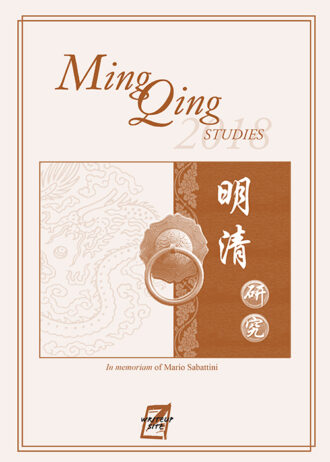Hsiao Li-Ling
""
Associate Professor at The University of North Carolina at Chapel Hill. In general, my research interests include the history of Chinese painting, the history of Chinese print culture, the history of Chinese drama, and the history of Chinese kung-fu novels. This interdisciplinary approach is fully demonstrated in the book and papers I have published. My first book, titled The Eternal Present of the Past: Performance, Illustration, and Reading in the Wanli Period (1573-1619) [Leiden: Brill, 2007], is an interdisciplinary study that draws together various elements of Wanli culture – illustration, painting, theater, literature, philosophy – and examines their interrelation in the context of the drama publication. Specifically, it examines a prevalent late Ming conception of the stage as a mystical space in which the past was reborn within the present. This temporal conflation allowed the past to serve as a vigorous and immediate moral example and was considered an important mechanism by which the continuity of the Confucian tradition could be upheld. By inscribing theatrical conventions of stage arrangement, acting gesture, and frontal address, drama illustration recreated the mystical character of the stage space within the pages of the book, and thus set the conflation of past and present on a broader footing. I am at the final stage of completing a manuscript titled Drama Illustration as Drama Criticism: Political Loyalty vs. Filial Piety in The Late Ming Illustrated Editions of Pipa ji, which explores the stylistic change from figure-oriented to landscape-oriented, from stage-oriented to garden-oriented illustrations during the late Ming period. The thirty or so editions of Pipa ji printed during the late Ming era feature twelve sets of different illustrations. These twelve sets of illustrations can be divided into two categories according to their distinct styles – the figure illustration featuring scenes from the stage and the landscape illustration featuring domestic life in the garden. These sets of illustrations are studied in light of the performance on stage and the traditional paintings. The final chapters explore the function of illustration as a form of literary criticism and the illustrator as a literary commentator. Responding to the text, illustration necessarily involves interpretation, augmentation, and revision of the text; in short, it necessarily involves commentary. Like any literary commentator, the illustrator hopes to offer a compelling interpretation and to sway the opinion of the reader. At times the illustrator works in support of the author’s seeming intention, but at other times he disputes the author at every turn, accentuating marginal or subversive details and urging the reader’s attention in new directions. Thus the intentions of the author are quietly, but sometimes powerfully mediated by the illustrator. I have also begun work on another manuscript titled Beyond Words: Pictorial Metaphor in the Ten Bamboo Studio Stationery Catalogue, which attempts to break new ground in the study of Chinese visual images by introducing literary tropes – paradox, simile, synecdoche, metaphor, and irony – as methodologies to understand images and how images interact with the written word to generate meaning, specifically in the context of personal letters written on the highly elaborate, pictorial stationery of the Ming period. This project takes up the most famous of all color stationery catalogues, that produced by Hu Zhengyan (1584-1674), owner of the printing shop Ten Bamboo Studio, in 1644 and 1645. Examining the 283 designs in the catalogue, as well as stationery produced by other printing houses, this study will consider the interplay of personal communication and accompanying image, arguing that the epistolary meaning is a function of the tension or relationship between the two, and that writers of the period – both anonymous and major – well understood this dynamic and selected stationery accordingly.

